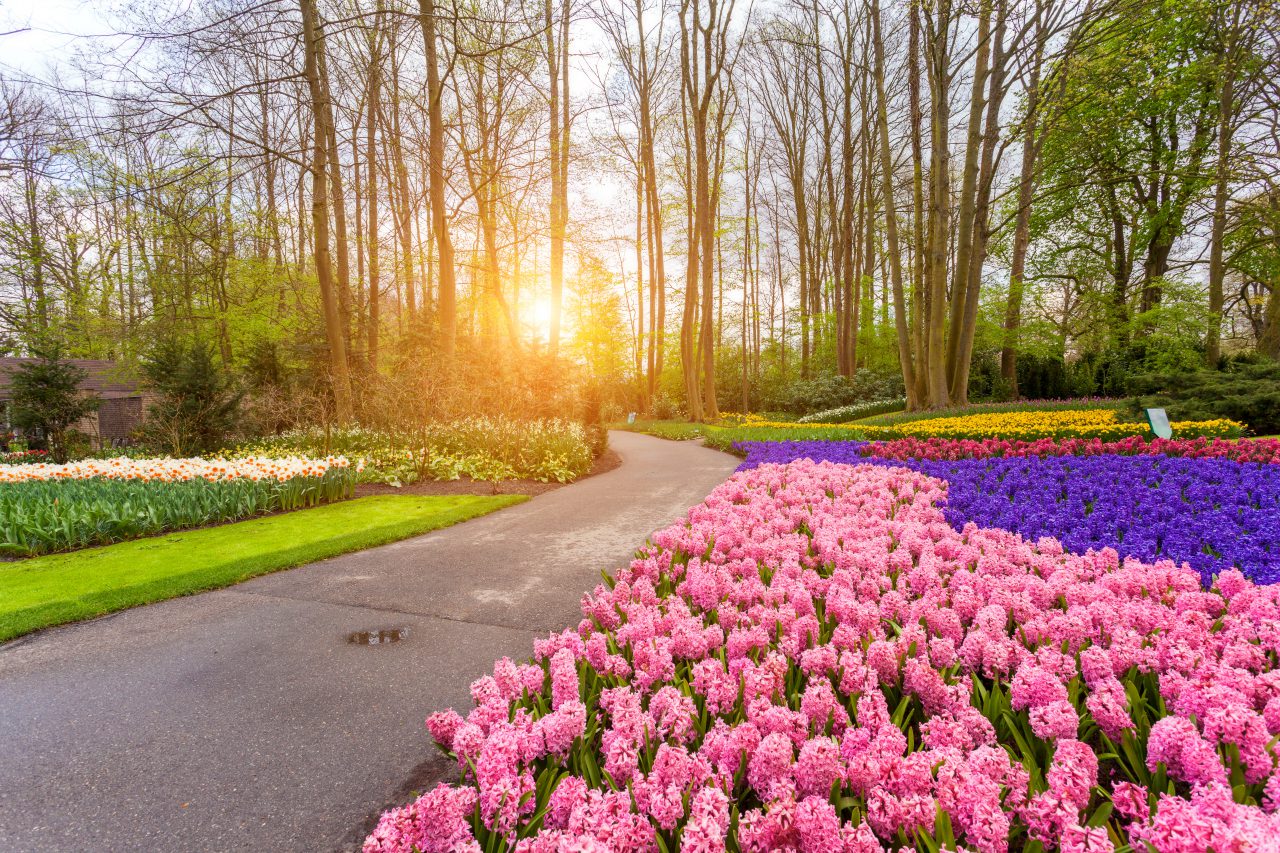As children we all learned that the sun rises in the east and sets in the west, a detail I never questioned, although I was dimly aware that the August sun is different from the June sun and that the December sun can unaccountably blind me when driving in the early morning or late afternoon. However, if the sun rises in the east every day, why doesn’t it hit the same garden areas throughout the year?
In reality the sun spends just a couple of days in the year rising in the east and setting in the west. In June, July and August, the sun rises in the northeast before disappearing in the northwest. In December, January and February, the pattern changes with a southeastern sunrise and a southwestern sunset. It is only in late March and late September that the sun actually rises in the east and sets in the west. On the winter solstice, Dec. 21, the sun is at its lowest point in the sky while during the summer solstice, June 21, it is at its highest.
How does this affect us gardeners? You might think that it’s the cold that puts plants to sleep and the warm air that causes them to stir from their winter slumber. Actually, many plants react to the lengthening daylight hours. My roses begin to put out new growth in February when we’re still quite chilly in the Piedmont with many freezing nights. February is the month when many plants begin stirring, although there are some plants like dahlias that need warm soil before they deign to make an appearance.
Plants get their energy from the sun. In grammar school we all learned about photosynthesis, the process by which leaves make food to send down to the roots. As gardeners, we have to calculate when these plants need this energy from the sun. Let me explain.
Facing north, my back yard can comfortably house in the summer a myriad of daylilies, plants that are the ultimate sun lovers. Yet, in the winter, this same back yard resembles Antarctica: my back steps, which broil in the summer sun, cannot melt snow, much less ice, in the winter. Three years ago a volunteer redbud, Cercis chinensis, suddenly appeared in the backyard. Now, I love redbuds, but this redbud was somewhat of a disappointment, as it never bloomed. I blamed the problem on youth and immaturity until I planted two crapemyrtles in the same area.
The two crapemyrtles bloomed throughout the summer into the fall, greatly overshadowing the bloomless redbud. Finally, I figured out the problem: redbuds are programmed to bloom before the leaves of neighboring trees appear. Consequently, they need to build up their energy in late January if they are to flower in March – and in January, my back yard features little sun. Crapemyrtles, on the other hand, begin to bloom in late June, so they receive the needed energy in April and May, a time when the sun has begun to appear in the back yard.
It has become apparent to me that plants need a certain amount of sunlight for growth – but they need it in differing amounts throughout the year, just as shade-loving and sun-loving plants need different amounts of sun. The daylilies can thrive in my Antarctica because they are asleep in winter and begin to build up energy reserves in April and May before their June bloom cycle. Because the crapemyrtles wake up later than the redbuds, they, too, can survive Antarctica and bloom at their appointed time because there is enough sun to help them build the necessary energy reserves.
The experts exhort us to plant the right plant in the right place, but this is harder to achieve than it sounds because the sun is continually moving. My climbing rose, “Cl. Cécile Brünner,” only blooms in mid-April for me, although she is a reliable rose that should rebloom. The reason? My neighbor’s trees are bare in March, allowing my Cécile to soak up the sun for her April début. After the first bloom cycle, my neighbor’s trees have leafed out, leaving Cécile with too little direct sunlight to put on another show.
So now the task before me is this: I have to study different contours of the garden at different times of the year to see when and where the sun reaches the plants. I find that taking pictures is the way to do it. By making a photographic record four times a year (approximately Dec. 21, March 21, June 21 and Sept. 21) and considering various bloom cycles, I am able to determine which plants should go where. During those four days I take pictures at 9 a.m., noon and 3 p.m., giving me an accurate record of when the sun hits a particular area.
By keeping a photographic record of the sunlight in my garden, I can determine if the early bloomers will receive enough sunlight to perform. I can also deduce where the harsh afternoon sun of summer will land. Many sun-loving plants, including roses, fare better with a little protection from the afternoon sun, which is much hotter than the summer morning sun.
There are many things we can change in the garden. We can amend the soil, we can water the roots of plants during a dry spell, and we can give our plants nourishment in the form of fertilizer. The one thing we cannot change is the course of the sun. If we remember that the sun will march from the southeast to the northeast back to the southeast in the course of a year, setting in the southwest, northwest and many points in between, this can give our plants a head start. And we gardeners know that is a good thing.









